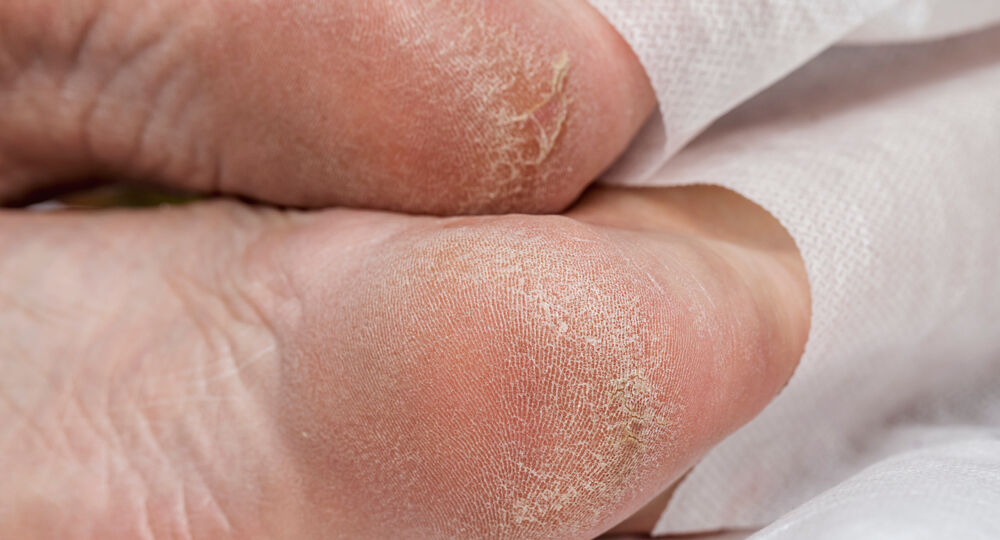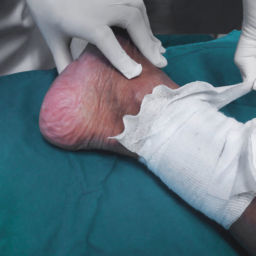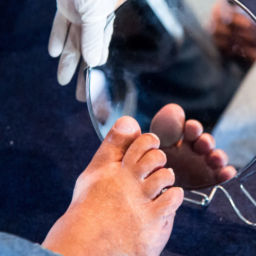
One of the common complications of diabetes is cracked feet. This occurs when the skin on the feet and heels become dry, thick, and develops small cracks. One of the primary causes of cracked feet due to diabetes is high blood sugar levels. High blood sugar levels cause damage to nerves and blood vessels in the feet, leading to peripheral neuropathy and reduced blood flow. This can result in dry skin and small cracks on the feet. According to a study published in the Journal of Diabetes and Its Complications, 21% of people with diabetes develop foot ulcers, which can lead to cracked feet and other complications.
Let’s Dig Deeper into the Causes for Cracks in the Feet
Some of the symptoms of cracked feet due to diabetes include dry skin on the feet, the presence of small cracks or fissures on the heels, and thickened skin around the heels. If left untreated, these cracks can become deep and painful, leading to further complications.
To prevent complications, it is important to check your feet regularly for signs of cracks or other abnormalities.
- Wearing socks and properly fitted shoes can also help prevent cracked feet due to diabetes. It is also important to treat cracked heels as soon as they occur, as deep cracks can lead to infection.
- Checking your feet daily and monitoring your blood sugar levels can help prevent cracked feet due to diabetes.
- Using a pumice stone will gently remove dead skin from the heels can also help prevent the formation of cracks.
- If you notice any cracks or other abnormalities, seek medical attention immediately to prevent further complications.
What are Treatment Options for Cracked Heeled Diabetes
As we previously discussed, the skin on the heels of the feet can become dry and thick, leading to painful heel fissures or cracks.
One of the most effective treatments for cracked heels due to diabetes is keeping the feet moisturized. Petroleum jelly is a great moisturizer that can help to soften the skin on the heels and prevent further cracking. Applying petroleum jelly to the feet and heels at night and covering them with socks can be a great way to lock in moisture and speed up the healing process.
It is also important to take care of the feet and heels carefully to prevent further damage. This includes wearing comfortable, well-fitting shoes, avoiding walking barefoot, and using foot file to gently remove dead skin from the heels.
If the cracks in the heels are deep or painful, it is important to seek medical attention. Our podiatrists across the eastern and western Floriida coasts can provide treatment for heel fissures, such as debridement or prescription creams, to help speed up the healing process and prevent infection. With proper treatment and care, diabetic patients can prevent complications from cracked heels and enjoy healthy, pain-free feet.
How can you avoid cracked dry feet that causes diabetes?
The American Diabetes Association reports that approximately 30% of people with diabetes over the age of 40 develop peripheral neuropathy, which can cause dry skin and cracks on the feet. Diabetes can damage the nerves that control the sweat glands, leading to dry skin and cracked feet. Paying special attention to the heels and other areas prone to dryness is of utmost importance.
In addition to moisturizing, it is important to keep the feet clean and dry. Use a mild soap to wash your feet, and dry them thoroughly, especially between the toes. Moisture between the toes can lead to fungal infections, which can exacerbate dry, cracked skin.
Shoes should be comfortable and provide good support to the feet. Avoid wearing shoes that are too tight or too loose, as these can cause extra pressure on the feet and exacerbate dry skin.
Finally, it is important to inspect the feet regularly for signs of cracks or other abnormalities. Diabetes can damage the nerves that provide sensation to the feet, making it difficult to detect problems. Check your feet daily, using a mirror if necessary, and seek medical attention if you notice any cracks or other abnormalities.
Patients who are experiencing cracked feet due to diabetes should consider visiting any fo the Certified Foot and Ankle Specialists offices. Our doctors are trained to diagnose and treat a variety of foot and ankle conditions, including those related to diabetes.
They can provide advice on how to properly care for the feet and recommend treatments to alleviate symptoms, such as moisturizing creams or prescription medications. Additionally, they can monitor the feet for any signs of complications and provide early intervention to prevent further damage. Make your appointment at Certified Foot and Ankle Specialists today – as it is the first step in maintaining healthy, pain-free feet (especially for individuals with diabetes).
Visit our clinical foot care locations in Boca Raton, Jupiter, Boynton Beach and Vero. For more locations click the link below.








